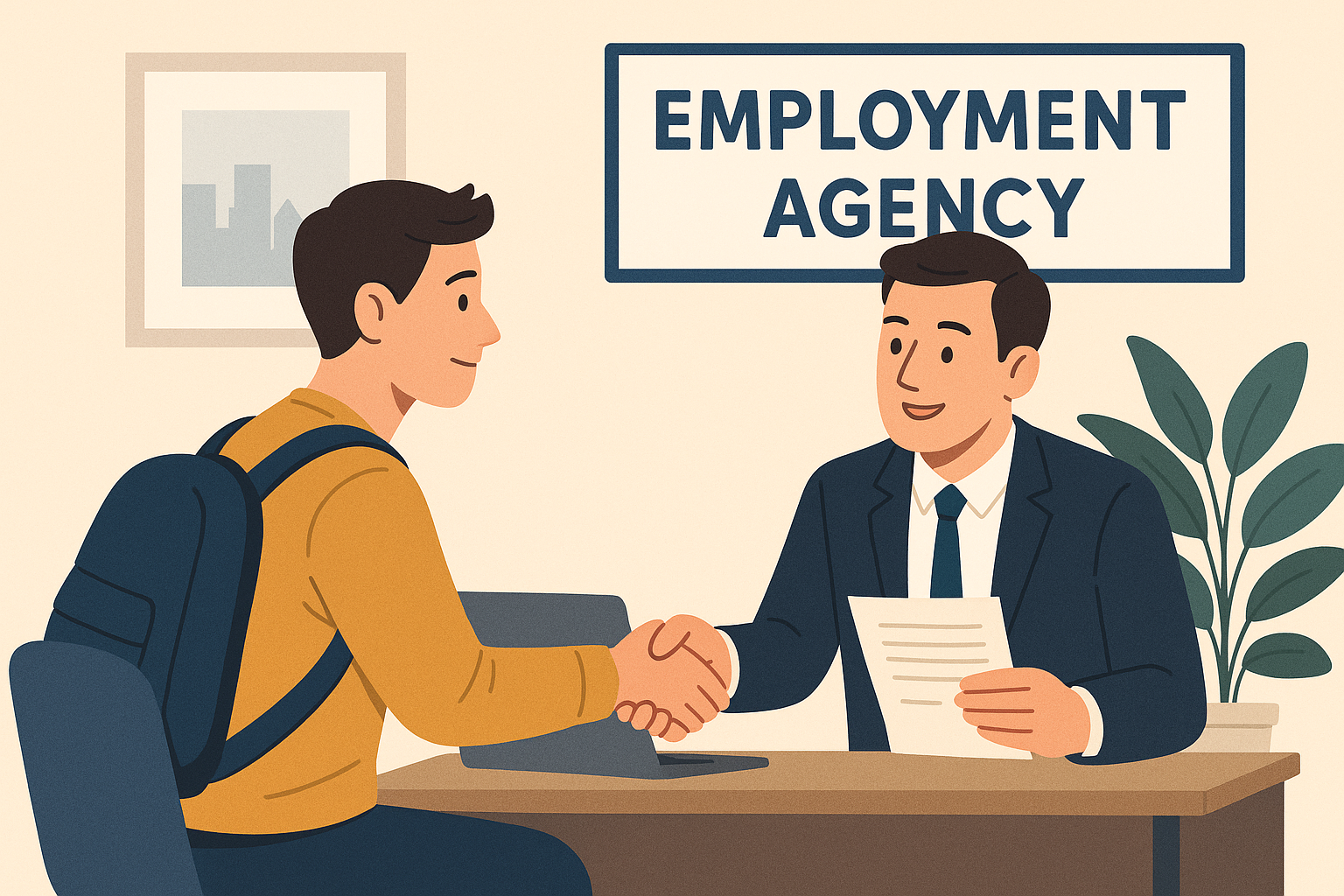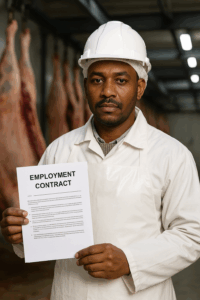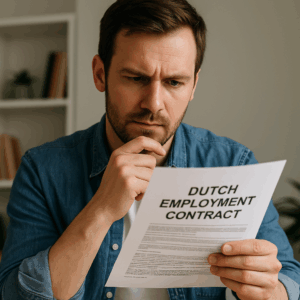Working Through an Employment Agency in the Netherlands: Phase A, B, and C Explained
Discover your rights within the Netherlands’ phase system when working through uitzendbureaus. Learn how phases A, B, and C affect contract terms and stability.

A must-read for all EU workers working via uitzendbureaus (temp agencies)
👷 Why this matters
Many migrant workers in the Netherlands are hired through uitzendbureaus (employment agencies). If this applies to you, your rights and stability depend heavily on the phase system — known as Phase A, B, and C.
Understanding what phase you’re in helps you:
- Know when you get more legal protection
- Check how long your contract can last
- Plan for permanent work
📊 What is the phase system?
In the Netherlands, most employment agencies use a phased contract structure set by the ABU or NBBU collective labour agreements (cao). It has three main phases:
| Phase | Contract type | Duration | Key points |
|---|---|---|---|
| A | Flexible (on-call, short-term) | Max. 52 worked weeks | Little job security, easy dismissal |
| B | Fixed-term contracts | Max. 3 years, up to 6 contracts | More rights and stable planning |
| C | Permanent contract | Unlimited | Full protection under Dutch law |
🔹 Phase A – Start phase (Flexibel)
You begin in Phase A. In this phase:
- You can work on a zero-hour or on-call basis
- The agency can stop the contract without notice
- You build up seniority per week worked, not per calendar week
- If you don’t work for 26 consecutive weeks, your counter resets to 0
⚠️ Be alert: some agencies rotate workers to keep them in Phase A — this reduces your rights.
🔹 When do you leave Phase A?
You complete Phase A once you’ve:
- Worked 52 weeks (actual worked weeks, not calendar weeks)
- Then the agency must offer you a Phase B contract
🔹 Phase B – More protection
In Phase B:
- You must receive fixed-term contracts
- The agency may offer up to 6 contracts over a period of up to 3 years
- You can still be let go, but only at the end of the contract or under certain legal conditions
- If you’re sick or underperforming, dismissal is more regulated
📌 Tip: If you reach 6 contracts or 3 years, you automatically enter Phase C.
🔹 Phase C – Permanent contract
Phase C = permanent employment via the agency.
- You receive a permanent contract
- Dismissal requires a valid legal reason
- You have full legal protection like a direct employee
- You are eligible for unemployment benefit (WW) if dismissed
✅ At this point, your relationship with the agency becomes similar to that of a regular employer.
🔄 What if you switch agencies?
If you switch to a new agency:
- Your phase restarts at Phase A
- The 52-week counter begins again
- Only an interruption of more than 26 weeks resets your phase within the same agency
🔁 ABU vs. NBBU: Which rules apply?
Most major agencies follow the ABU CAO, but some use NBBU. The structure is similar, but:
- ABU: Phase A = 52 weeks, Phase B = 3 years
- NBBU: Slight differences in how weeks are counted and benefits handled
Always ask your agency which CAO applies.
❓FAQ
Can I ask what phase I’m in?
Yes — the agency must tell you if you ask.
Can they fire me without reason in Phase A?
Yes — especially with a zero-hour contract. That’s why it’s important to move to Phase B.
Can I say no to a Phase B offer?
Yes, but you’ll stay in Phase A and lose the chance for more rights.
What if I’m sick in Phase A?
You’re only paid if you’re actually scheduled to work. In Phase B and C, you’re better protected.
✅ Summary
| Phase | Duration | Rights |
|---|---|---|
| A | 0–52 worked weeks | Flexible, easy to dismiss, no fixed hours |
| B | Max. 3 years (6 contracts) | Fixed-term contracts, regulated dismissal |
| C | Unlimited | Permanent contract, full protection |




